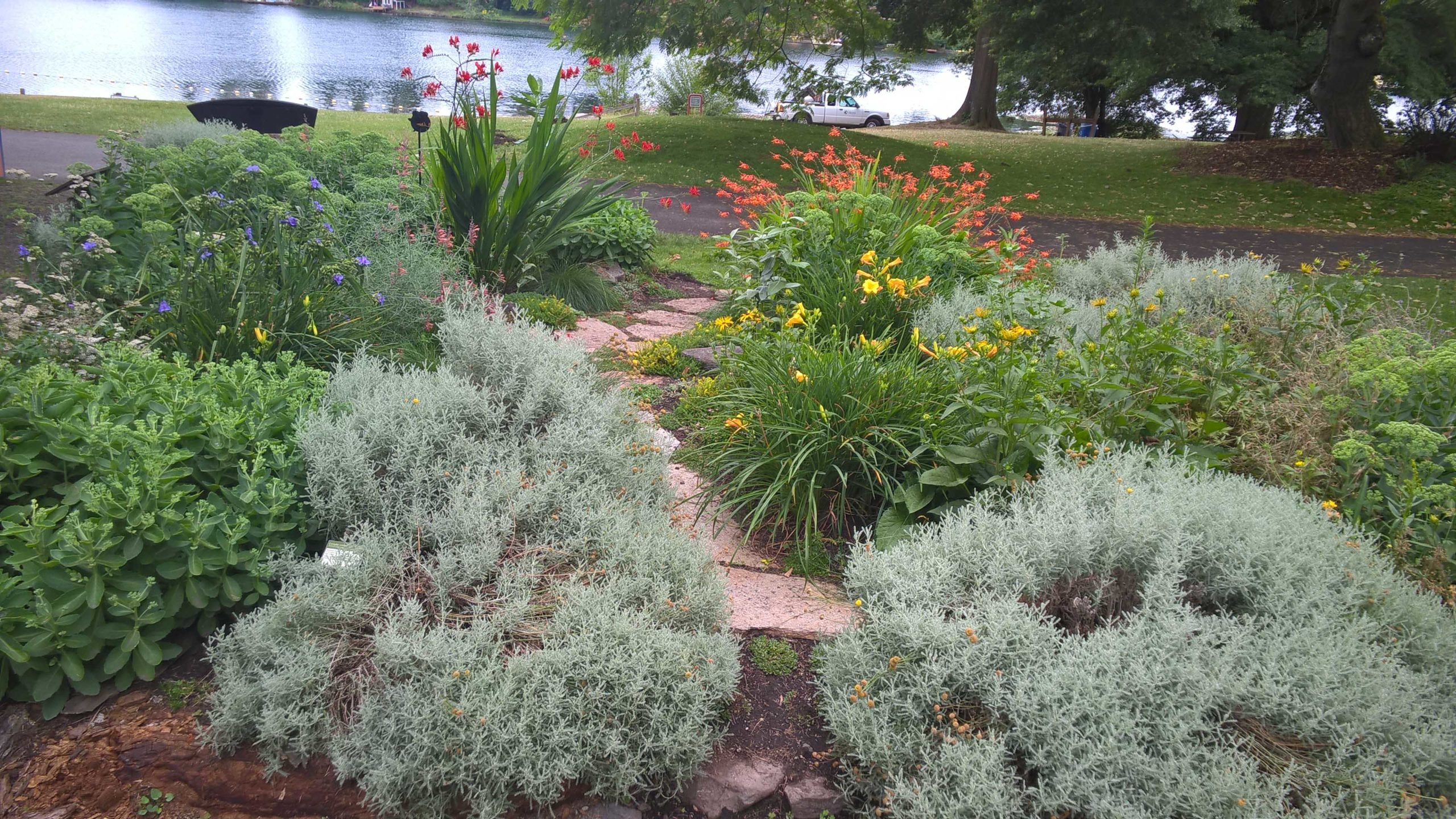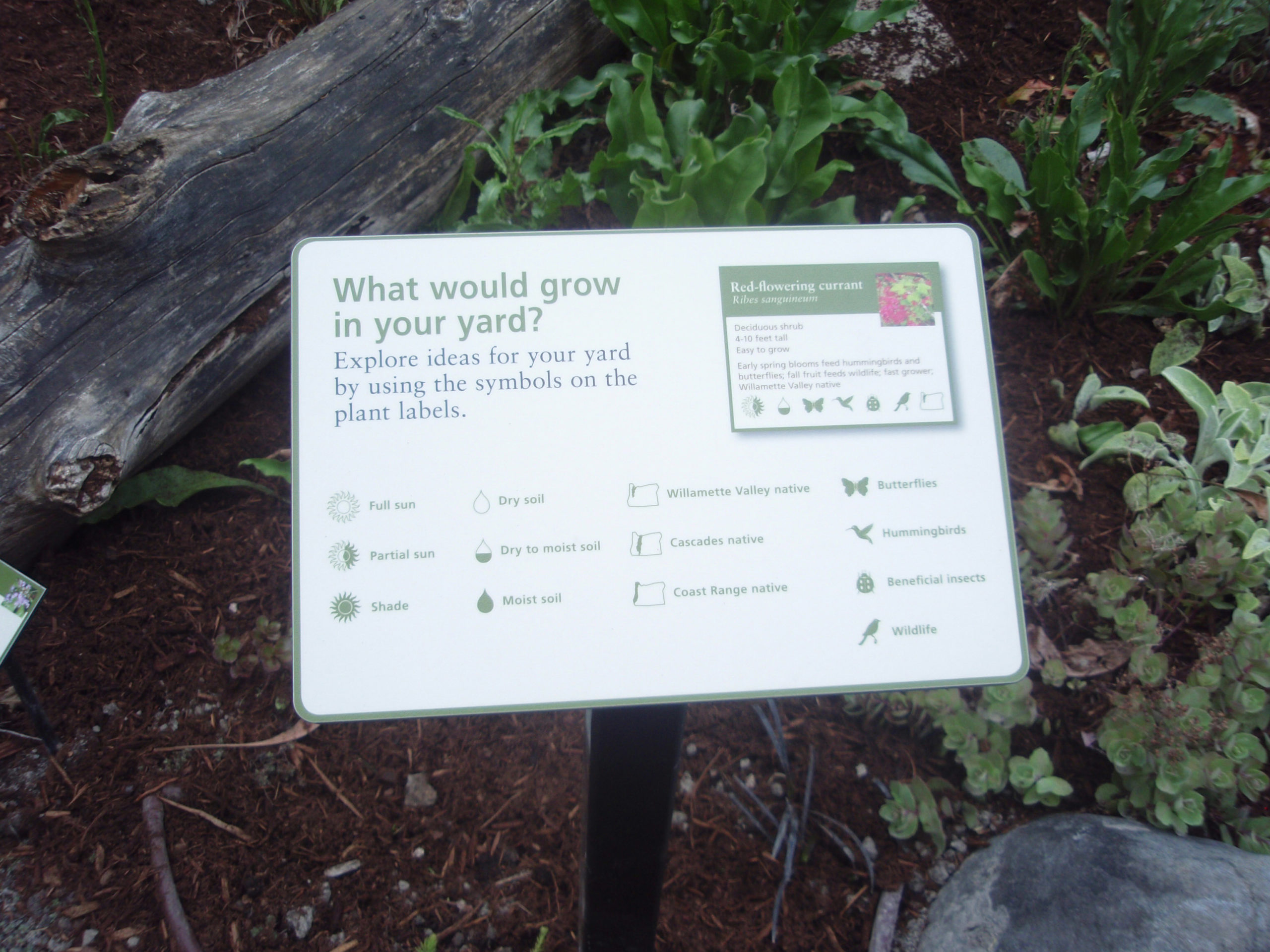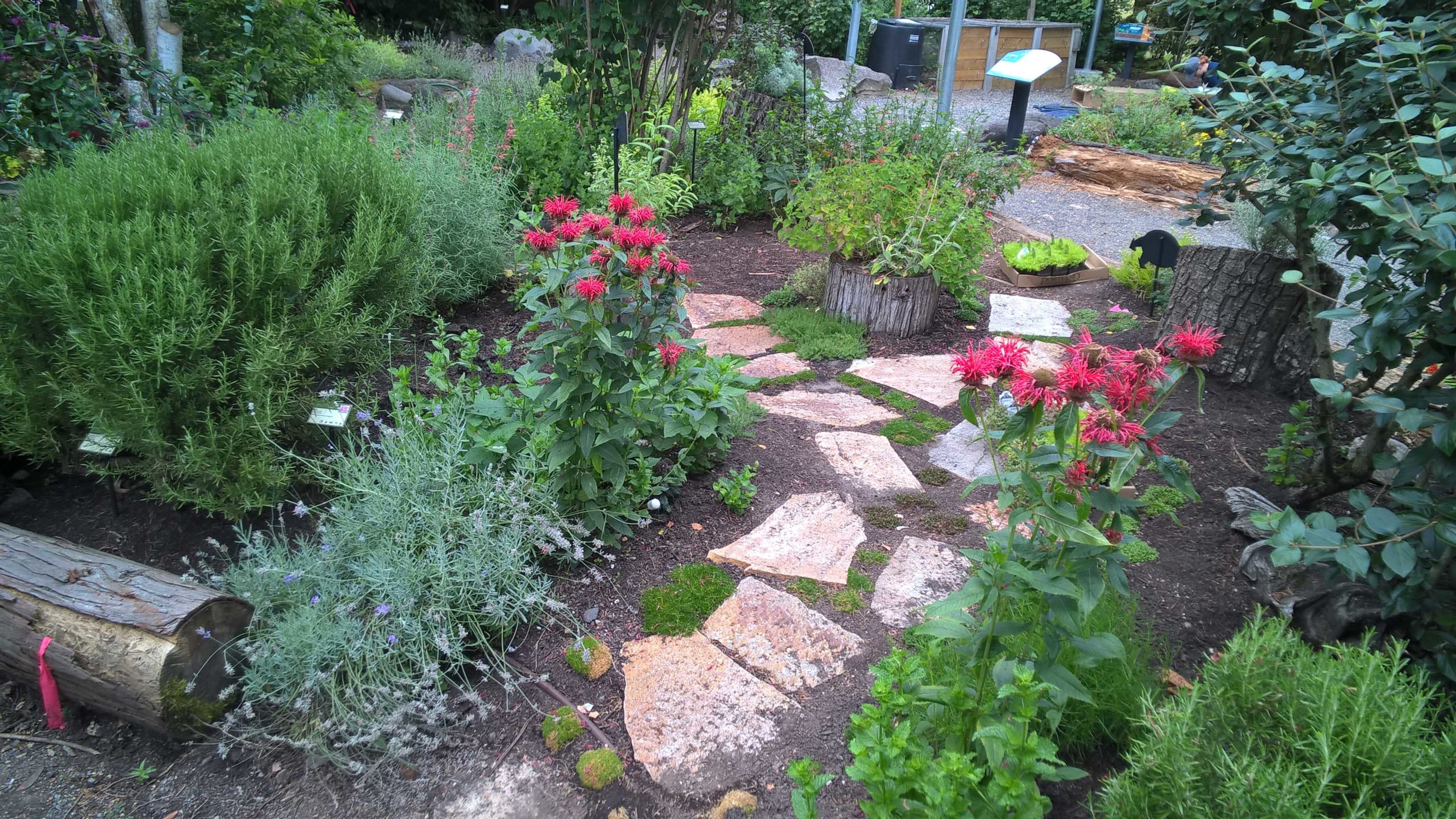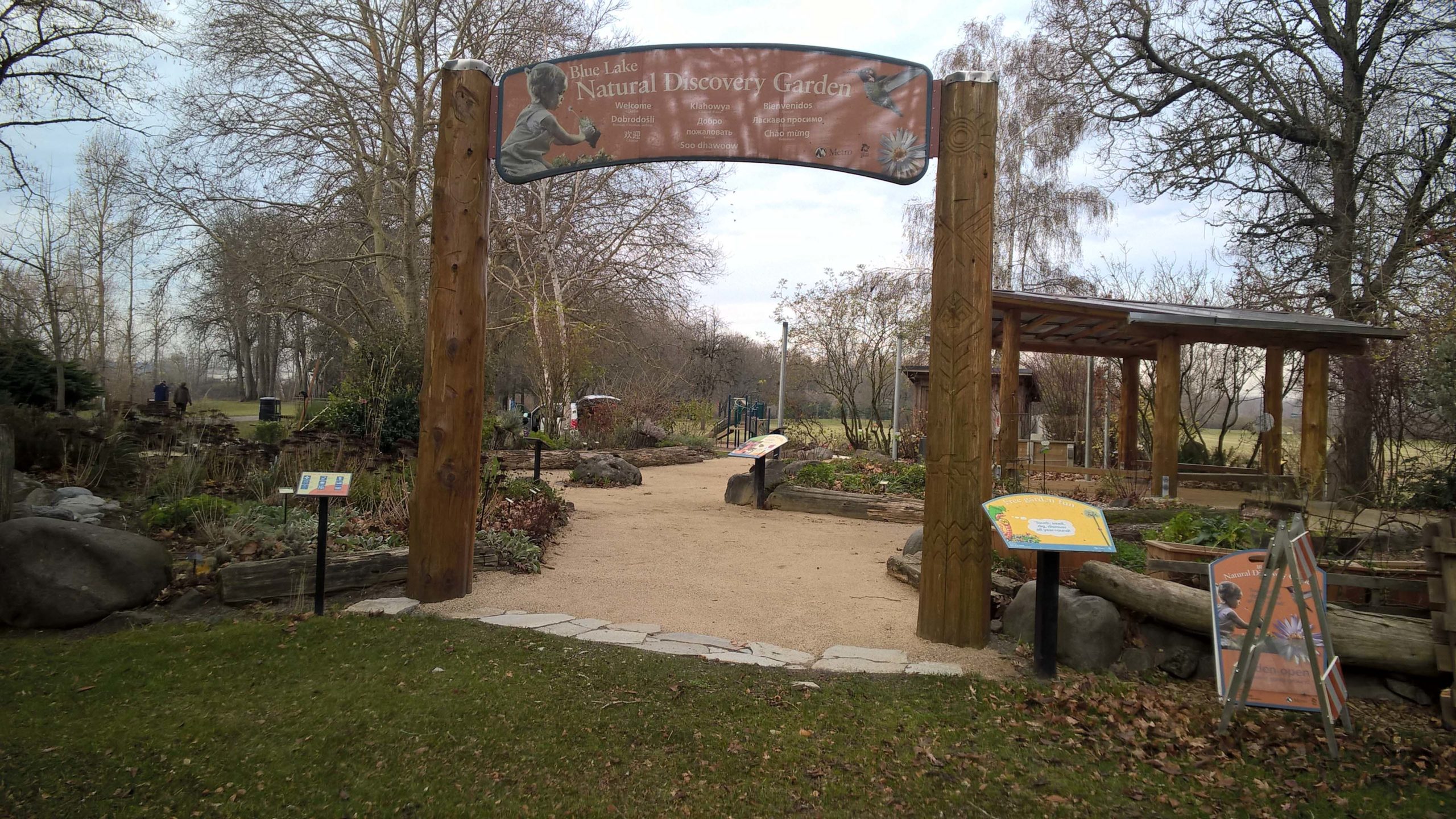Open Gardens Project – Featuring the Blue Lake Park Discovery Garden Habitat
Site Information: The Blue Lake Park Discovery Garden is a Backyard Habitat community site and demonstration garden located in Fairview. The site conditions range from sun to shade and dry to moist.

What inspired you to enroll in the Backyard Habitat Certification Program?
Protecting wildlife and creating habitat for wildlife, by planting native plants and gardening pesticide free are important goals for our natural gardening education program at Metro. BHCP is an important partner of ours, and we want to promote the work that they do through our Blue Lake Park Discovery Garden.
How would you describe the habitat?
Our garden demonstrates different gardening features and techniques that promote natural gardening. Some of our garden features include: two raingardens, a designated native plant section with native plants intermingled throughout the rest of the garden, interpretive signs that educate about native plants and beneficial wildlife, a composting area with signs that talk about our important decomposers, butterfly and pollinator habitat, mason bee houses and bug baths. The whole garden is pesticide free and we have pesticide free zone signs to let people know.
What are your top three favorite native plants and why do you love them?
- Red flowering currant – It is very colorful in the spring, and the flowers and fruit provide food for wildlife, especially hummingbirds.
- Wild Ginger – It has very cool flowers and leaves, and the roots taste really good.
- Maidenhair fern – It has very cool fronds.
What changes have you observed as a result of creating habitat?
We have quite a diversity of animals that visit the garden, including striped skunks, long-toed salamanders, Pacific chorus frogs, Anna’s hummingbirds, Pileated woodpeckers, squirrels, Canada geese, Mallards, tiger swallowtails, and many more.
What were the two most significant challenges you encountered while creating habitat, and how did you address them?
The garden was built in a lawn section of Blue Lake Park, so we didn’t have any of the problems that you might have with an existing garden. Habitat features and native plants were incorporated into the design, but we continue to add new plants and features.
What resources did you find especially helpful?
Native plants and wildlife habitat have long been incorporated into Metro’s natural gardening programs and in the restoration work that our Parks does with their natural spaces, so we used our existing knowledge and experience when designing the garden.
How do you enjoy your Backyard Habitat throughout the different seasons? What are its highlights in each season?
It is always exciting when new plants start blooming each season. I love the leaf colors in the fall from plants like vine maples. In the winter there is a peace and quiet to the garden as the park is empty and many plants are dormant. In the spring, the red flowering currants are in bloom and Trillium and other ground covers are starting to bloom. In the summer, there is a lot of color with many of our perennials in bloom.
What part of your backyard habitat are you most proud of?
I am most proud of the diversity of plants and wildlife features that we have in the garden.






